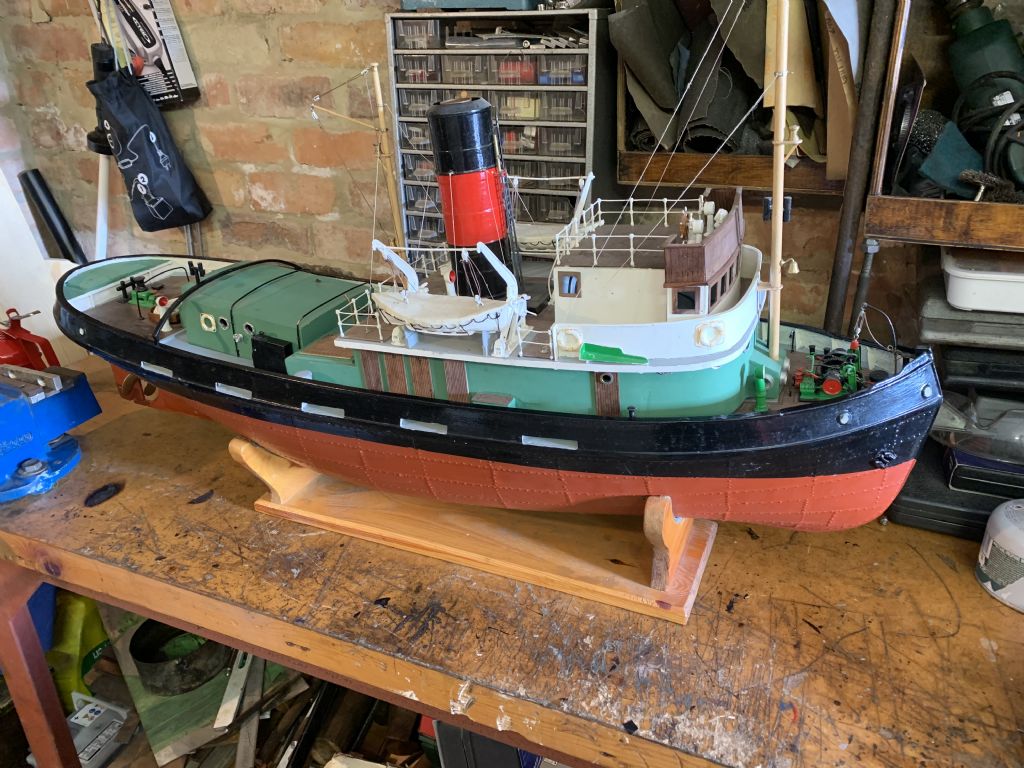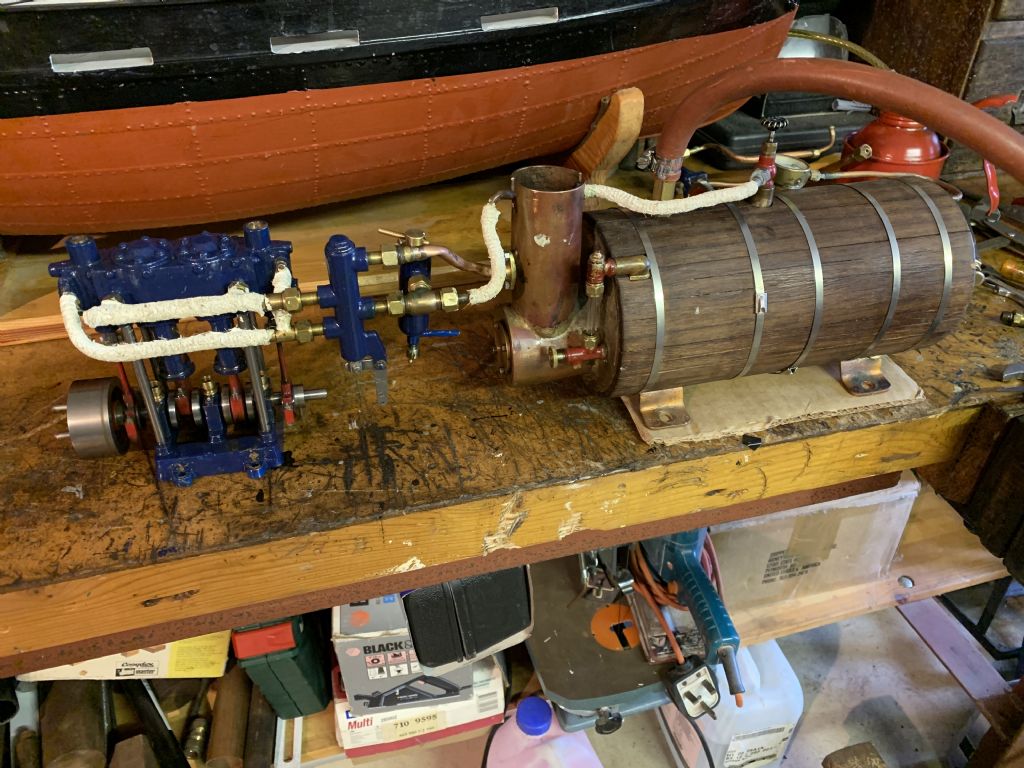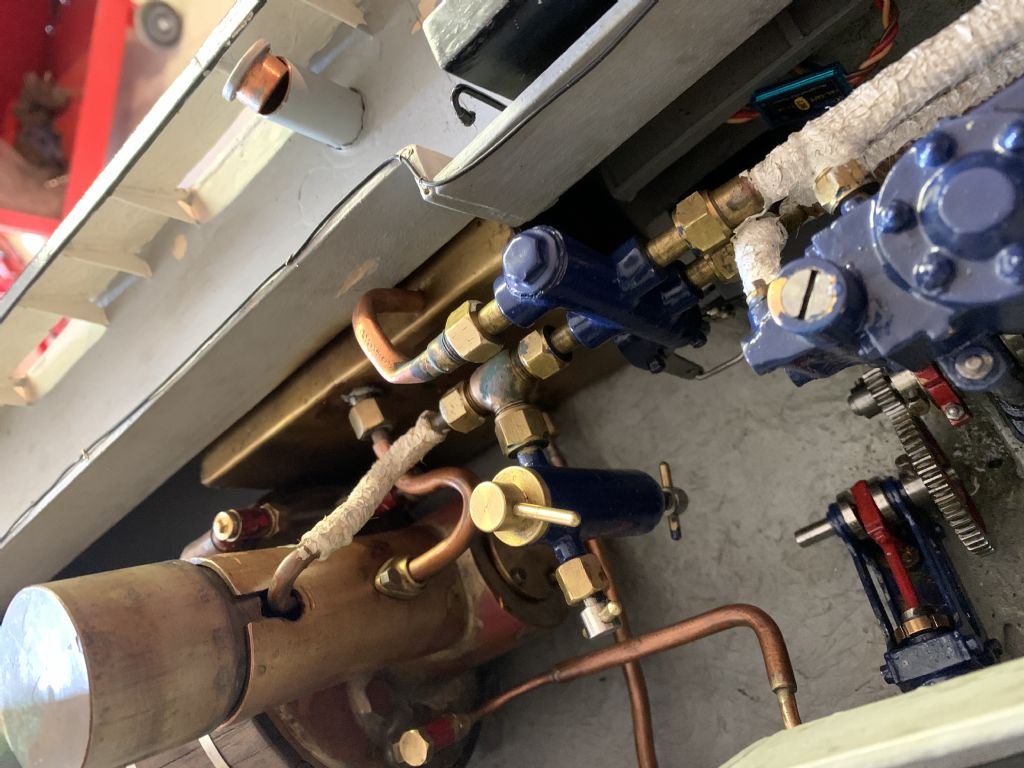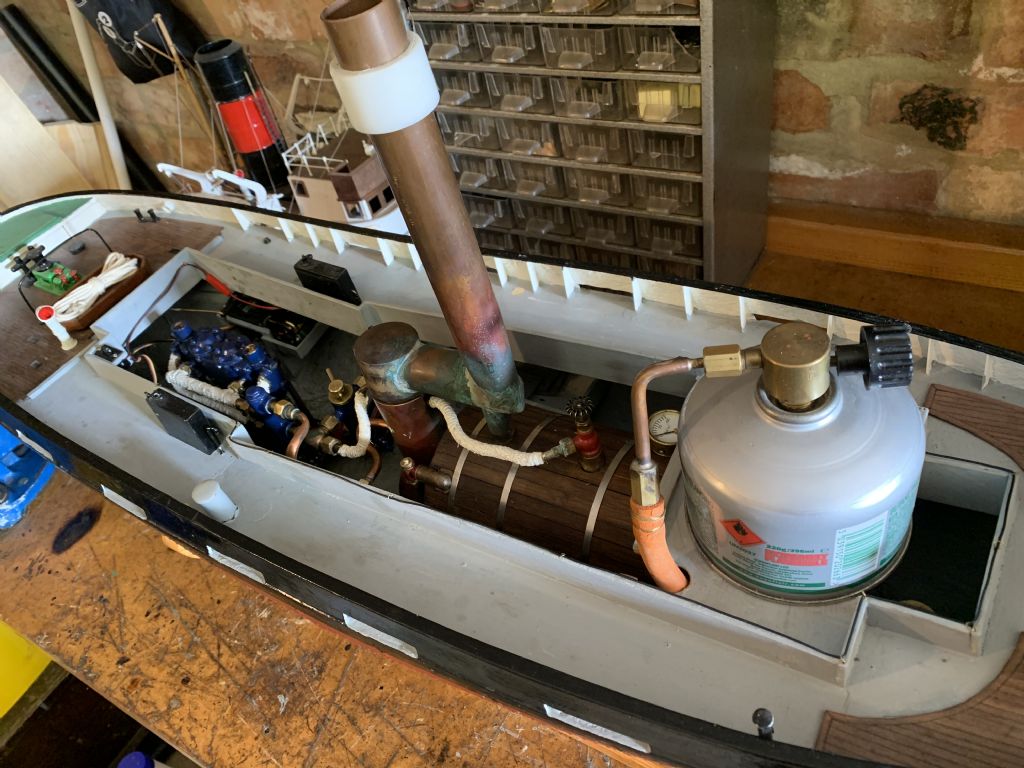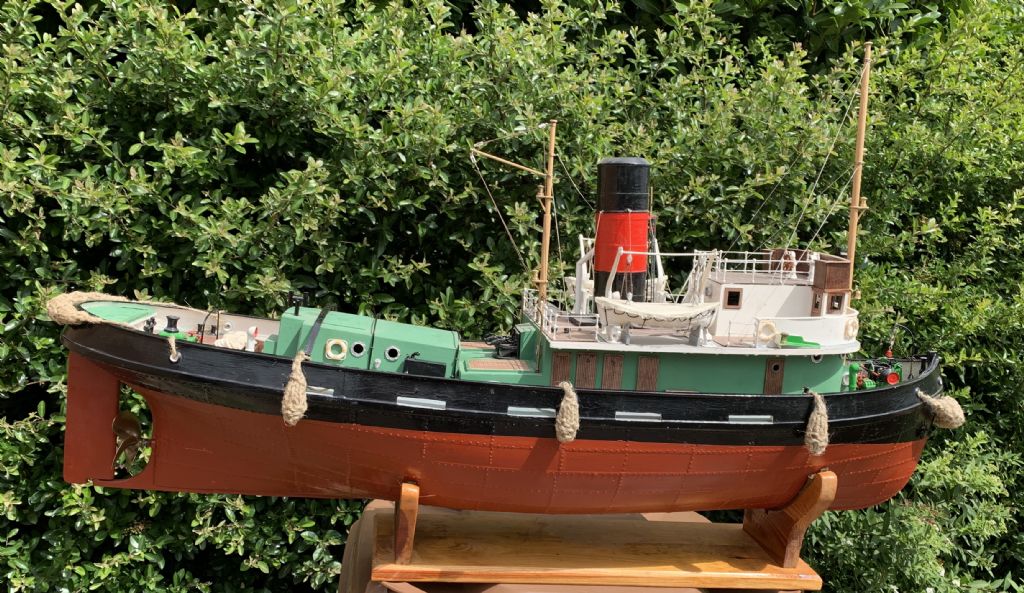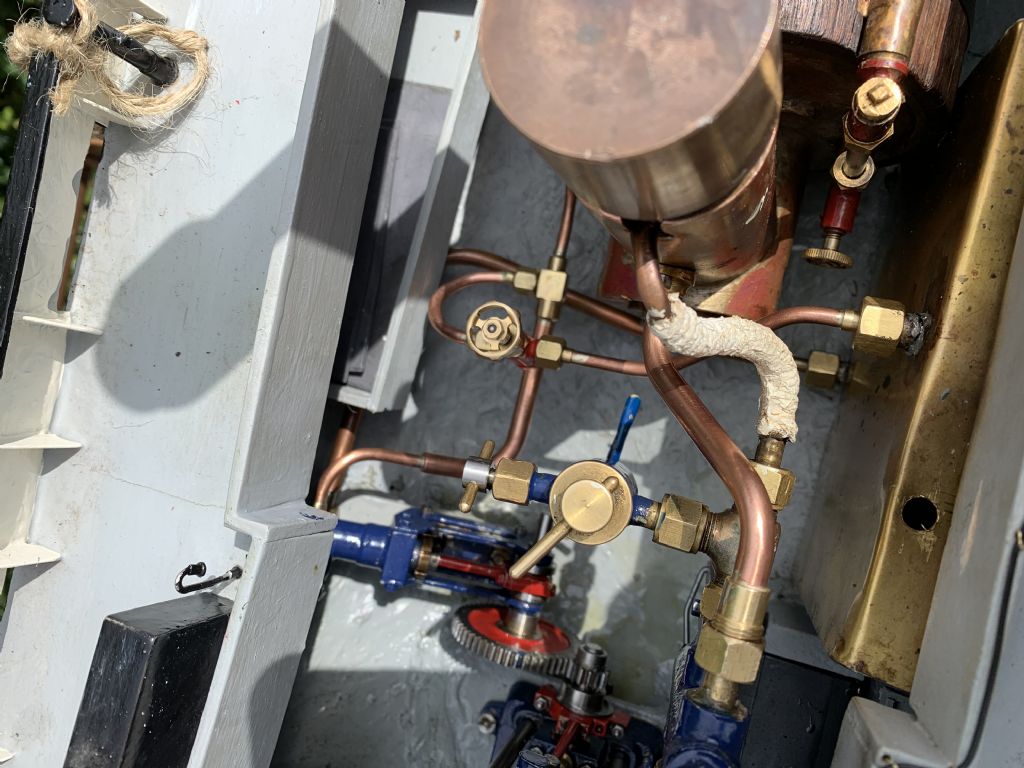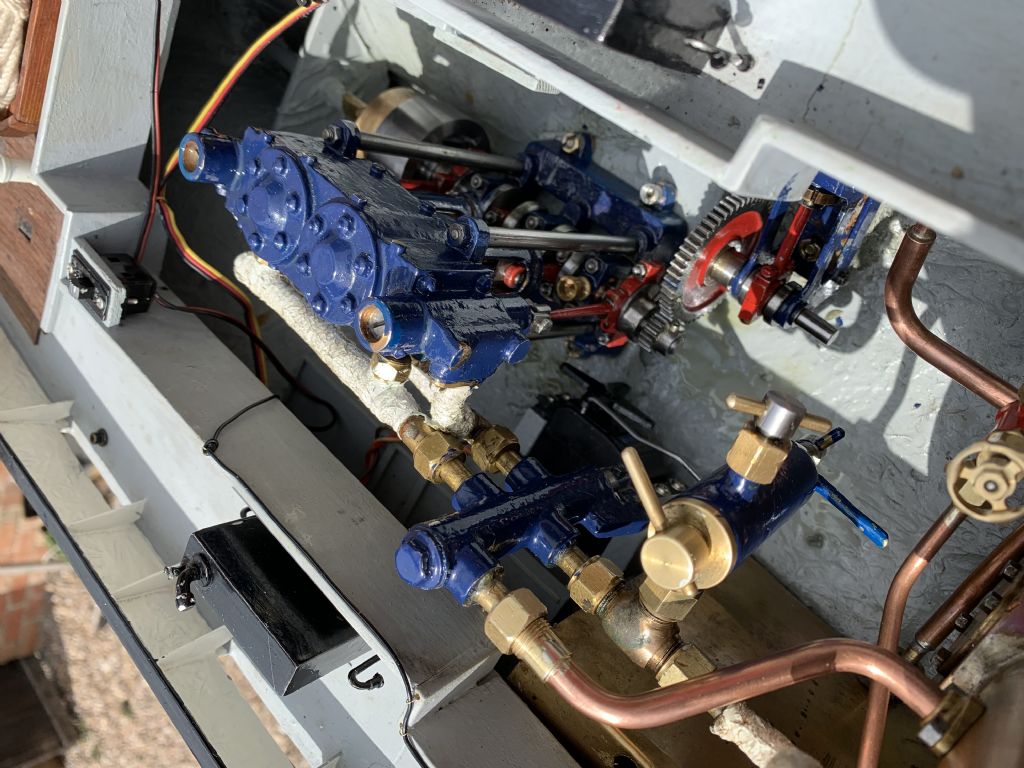Hi Mark,
Your father certainly knew his stuff, what a lovely legacy to have 
The centre flue boiler is a Martin Evans design published by SARIK, which comes in various sizes from 4" > 2" diameter, I think you may the 3" version which I also built about 25 years ago, a very robust sound design.
Lots of rules and regs these days about needing a current test certificate for the boiler which some model boat clubs have tester, certainly model engineering clubs do. But if you have a private lake in your garden happy days !!
The most important part of the steam plant is the displacement lubricator which is in the steam feed from the boiler to the engine which needs to be filled with steam oil before the run and the condensed water drained from it after the run, the steam condenses in the lubricator and forces the oil up and into the steam pipe.
The water feed pump should have a bypass valve to allow the excess water to be returned to the water tank, this prevents the boiler being filled with too much water, the rate of feed is a matter of trial & error.
The exhaust steam does appear to be going back into the tank, many folk wouldn't bother and put the exhaust straight up the funnel.
Hope this helps, a gas cut of valve for the burner is a good safety precaution if your going to use radio control, if it gets stuck in the middle of the lake to prevent it boiling dry, because the blow lamp is hot enough to melt the boiler joints!!
Regards Ray (Bob beat me to reply)
Edited By Ray Wood 2 on 05/07/2020 09:39:31


